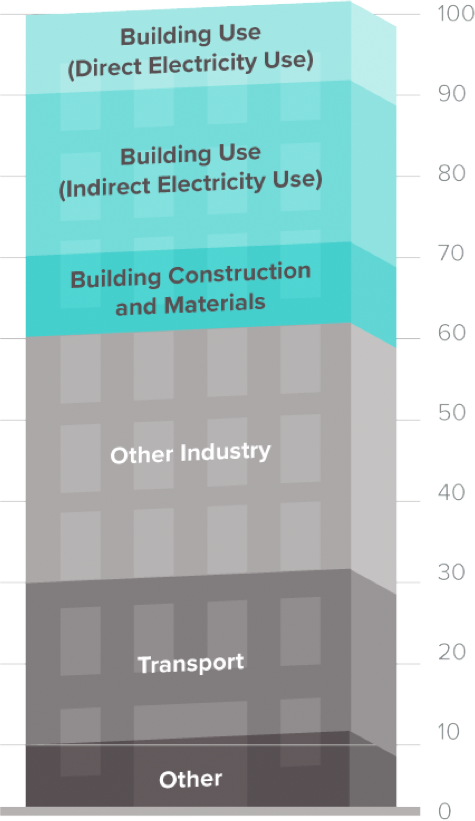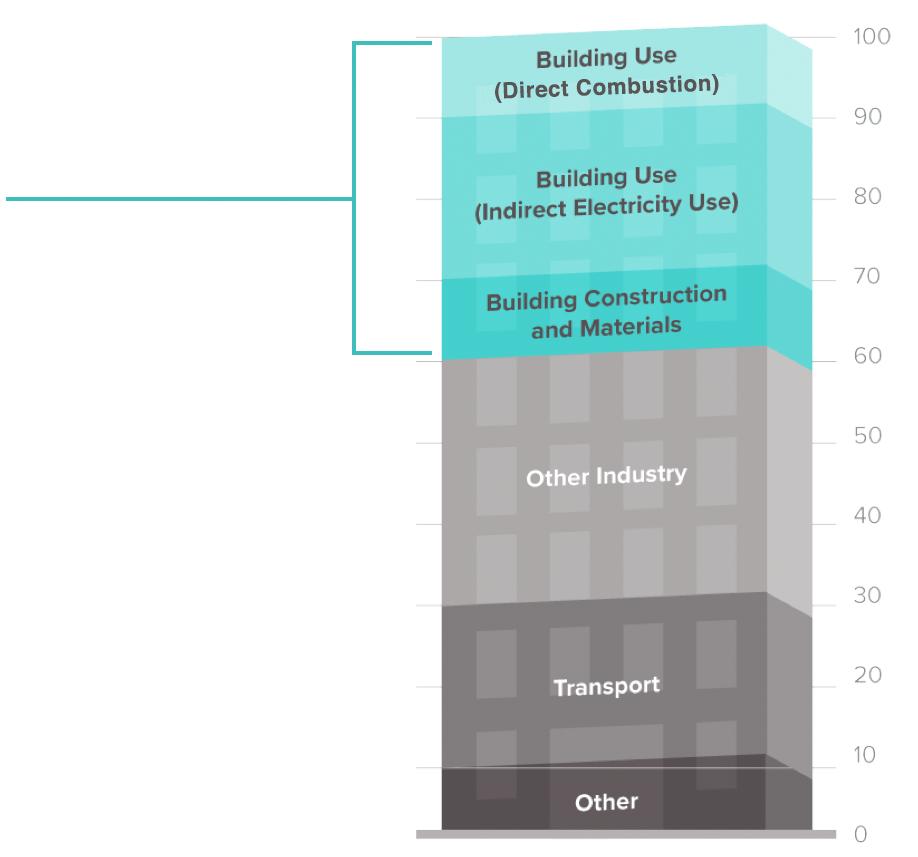
![]()
Building Today for a Zero-Carbon Future
Building use accounts for
39% of CO2
Emissions in U.S. *
 Today, many U.S. cities and states are poised to take bold action on climate change and address the large share of emissions from the built environment. These leading jurisdictions have moved ahead of the slow and deliberate process of the national energy code making bodies and are calling for codes that can meet the needs of their advanced goals and policies.
Today, many U.S. cities and states are poised to take bold action on climate change and address the large share of emissions from the built environment. These leading jurisdictions have moved ahead of the slow and deliberate process of the national energy code making bodies and are calling for codes that can meet the needs of their advanced goals and policies.
Codes for Climate is working to provide achievable pathways for cities and states to adopt climate-aligned codes that help them accelerate significant carbon and energy savings for both new construction and existing buildings, for all building types within the next decade.
